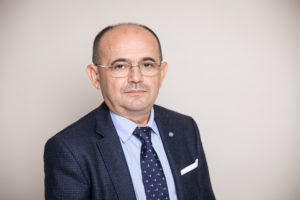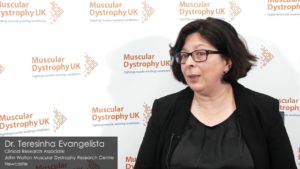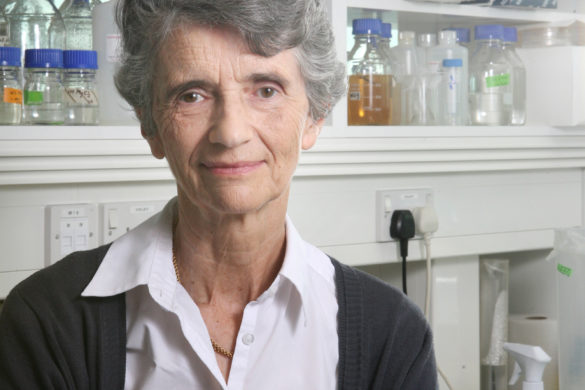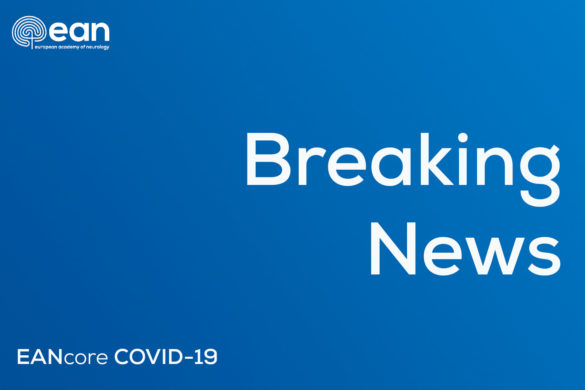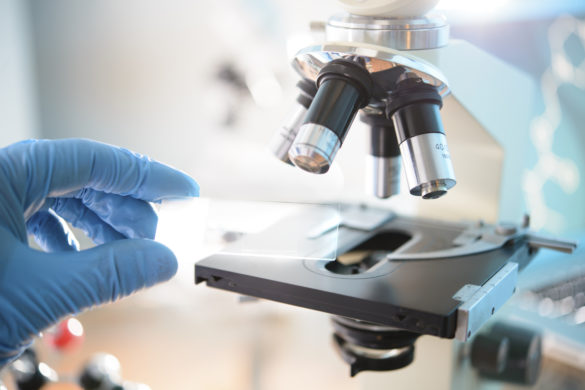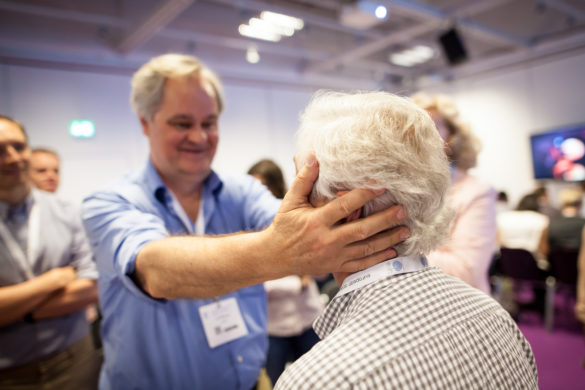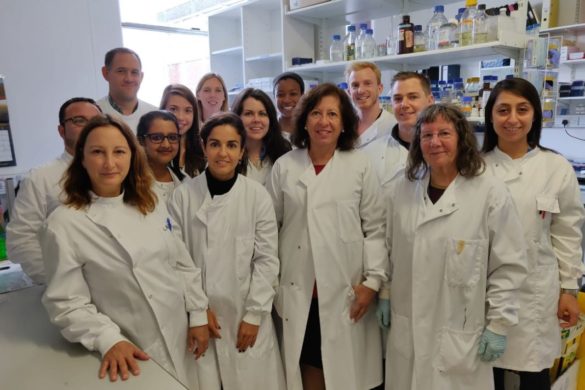Interview with Dr. Teresinha Evangelista Coordinator of European Reference Network for Rare Disease – Neuromuscular Diseases Network ( ERN-EURO-NMD)
Professor Dafin Muresanu, Chair of the EAN Communication Committee
Teresinha Evangelista, Coordinator of European Reference Network for Rare Disease – Neuromuscular Diseases Network ( ERN-EURO-NMD)
Dafin Muresanu (DM): EURO-NMD is a European Reference Network for the thematic grouping of rare neuromuscular diseases (NMDs). Can you please illustrate to the EAN Pages readers the structure of this reference network?
Teresinha Evangelista (TE): NMDs include a broad group of diseases with overall prevalence of 1/3500-1/2500 that represent a major cause of mortality and morbidity in children and adults. Their rarity and diversity pose specific challenges for healthcare provision and research, and for the development and marketing of therapies. EURO-NMD is a comprehensive, clinically oriented approach to the thematic grouping of NMD built on many years of networking experience in the NMD field. EURO-NMD unites 61 of Europe’s leading NMD clinical and research centres in 14 Member States and includes several highly active patient organizations. The ERN centres see more than 100,000 NMD patients annually.
The ERN covers five sub-thematic areas: muscle diseases, neuropathies, neuromuscular junction defects, mitochondrial disorders and motor neuron disorders. The ERN was designed around activity groups for clinical aspects, research, education, ethics and the patient advisory board.
Each of the five sub-thematic areas constitutes what we call a specialist group. One expert, supported by co-chairs, leads each of these groups and they address both genetic and acquired diseases in either the paediatric or adult ages. To support these groups there are also four cross cutting groups for genetics, pathology, imaging and neurophysiology. The Activity Groups are responsible for patient care, establishment of best practice guidelines, teaching and education in the respective areas. The Patient Advisory Board is responsible for identifying and acting on patients’ concerns and expectations and it nominates one or more representatives to the different activity groups. The Ethics Committee identifies and examines ethical and social aspects of clinical and research work. The Education Board identifies teaching needs and activities. The Research Board identifies and monitors research activities.
The ERN functions in a collegial manner with the Board of the ERN being the primary decision making body, supported by the Executive Committee and the Secretariat. The Board of the ERN has a representative from each one of the 61 Healthcare Providers and all the patients that are part of the Patient Advisory Board have a seat in the Board of the ERN.
DM: How would you define the ERN-EU-NMD’s role towards earlier and better diagnosis as well treatment?
TE: Through the effort that EURO-NMD is doing in education, namely with the production of webinars, the development of the Translational Summer school and the support done to other education activities such as the Myology Summer school; EURO-NMD is clearly willing to help disseminate the most updated information about the diagnostic and treatment of Neuromuscular Diseases. The development and endorsement of Guidelines or standard operating procedures is another of the goals of EURO-NMD to help to improve the diagnostic and treatment. Besides the guidelines that are in preparation in collaboration with the learned societies, namely with the EAN, we have recently developed and published an SOP regarding the technical details need for the muscle biopsies “1st ENMC European meeting: The EURO-NMD pathology working group Recommended Standards for Muscle Pathology Amsterdam, The Netherlands, 7 December 2018. Neuromuscul Disord. 2019 Mar 15.
The submission through the electronic platform developed by the EC (CPMS) of clinical cases for discussion by specialised panels is another mean of achieving this goal. This is particularly important not just for the HCP in the ERN but in particular, for the centres that are not part of the ERN and in countries were the expertise is scarce.
DM: The MoU established with EAN opens up new possible lines of cooperation. What do you and the ERN-EURO-NMD view as goals to reach with this cooperation?
TE: With this collaboration, EURO-NMD aims at increasing its visibility and at disseminating its role as a care structure open to all colleagues from across Europe. We would like, together with the EAN, to raise the profile of rare neuromuscular diseases in the community in general. We believe that this collaboration can avoid duplication of efforts in areas such as education and the development of guidelines and in this way transform clinical care in order to make it more equitable across Europe.
It is only in collaboration with a strong society such as the EAN, that in a near future we can establish the basis for a European Curricula for training in NMD.
DM: The ERN-EU-NMD’s also engages in educational activities and its Summer School addresses issues such as standards of care, outcome measure development, biomarkers. Can you shortly describe this initiative? Can it be an option for cooperation with EAN?
TE: The Translational Summer School was especially developed for researchers and clinicians interested in translational research in collaboration with TREAT-NMD. The course has very hands –on spirit with different workshop and enough time for discussion around the different topics. In session one we approach the basis of the “Translational Lifecycle” with an overview of the translational pathway from bench to bedside that serves as a foundation on which the rest of the course is built. Enough relief is done to the importance of standardizing pre-clinical studies as well as clinical studies; there is an overview on how the regulatory system works and we finish at this point with a mock TACT session. For the benefit of the EAN reader, I would like to briefly explain what TACT is. Established in 2010 the TREAT-NMD Advisory Committee for Therapeutics (TACT) offers world-leading advice on therapy development programmes from industry and academia. We approach the problematic of “Clinical Trials”, from the value of well-developed protocols to the use of meaningful outcome measures and appropriate cohorts. The advantages of patient registries to gather cohorts and to be used for post-marketing surveillance are also discussed and we finished with a strong emphasis on ethical aspects and the role of patients throughout the “Translational Life Cicle”.

